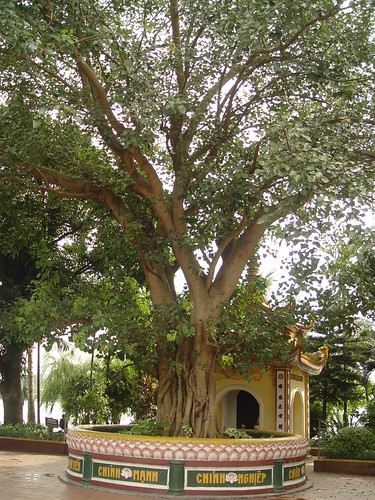
I have been given the honor of being a guest blogger for the next week at A Pagan Sojourn. On Monday, Thursday, and Saturday of this week, two other guest bloggers and I will be discussing various agreed-upon topics. I'll be cross-posting them here, possibly broken into parts for ease of reading. So on that note, here's the first part of A Buddhist View of Nature:
In Buddhism, nature is both seemingly irrelevant and of the greatest import. This paradox arises because Buddhist scripture rarely mentions nature directly in terms of its role in Buddhist philosophy. However, once one begins Buddhist practice, nature’s importance, its immediate relevancy and vitality and relationship to one’s practice is uncovered.
The Indian religious tradition historically praised the practice of leaving the distractions of city life by going forth into the wilderness to deepen one’s spiritual training. The Buddha himself renounced his guaranteed life of luxury and comfort as a prince—and eventual king—to go forth into the wilderness to find the answer to a single question: “How can we rid ourselves of suffering?”1
The Buddha’s awakening to the true nature of his existence came as he sat resolute through the night, under a starlit sky, meditating beneath the boughs of the Bodhi tree. During each successive watch of the night (which was likely calculated through observation of the heavens, not through the Buddha wearing a Timex :) ), he attained deeper levels of awakening that culminated with the rising of the morning star in full-blown Awakening. His mind was awakened, enlightened, to his true nature and to the true nature of all things. Additionally, near the end of this marathon meditation, the future Buddha conquered Mara, the personification of fear, greed, and hatred, and in doing so, reached down and touched the Earth, declaring that with the Earth as his witness, he had overcome those three poisons.
What does this say about nature? Nothing pedagogically. But if we look closely at these myths, the natural world was key in the Buddha’s awakening. He renounced his worldly life and pursued the life of a wandering monk, at home everywhere because he was not at home anywhere. The watches of the night framed his stages of awakening, culminating in the rising of the morning star. Mother Earth acted as his witness. The Bodhi tree symbolized his axis mundi—the immovable point of his universe, like the cross in Christianity or the altar within the circle, at the intersection of the Four Quarters, where Fire, Air, Water, and Earth meet.
Part 2 will be posted on Wednesday.
1 The Buddhist definition of suffering is something I plan on posting here later this week. Stay tuned!




4 comments:
This is a very intersting item to look at. I often think about this. I am an environmentalist myself and I am sad at how we treat mother earth. But from a buddhist prespective, I know that the earth will not last forever, and will eventuall pass- and in that context, what we have done and how we are living is not really a big deal, in relation to how large the universe is. The earth is nothing in that context.
Hi Namaste, thanks for the comment! You're exactly right about the impermanence of the earth. And yes, the earth is nothing in the context of the greater universe. But the thing to keep in mind is that each individual sentient being is nothing in that context as well—and yet we are charged to treat Every Single One with compassion, respect, and love. The earth is no different. The earth may be a non-sentient being, but it still deserves all the respect, compassion, and love that we can offer, and to not act in such a manner toward it shows that disrespect is still rampant in our minds. I think it is a big deal how we are living.
Mike...congratulations on your guest blogging duty. Neat. And thanks for the information about nature in Buddhism.
wow thanks so much for writing that...................... it helped a lot, it was one of the best things that i have read for this topic!!!
Post a Comment